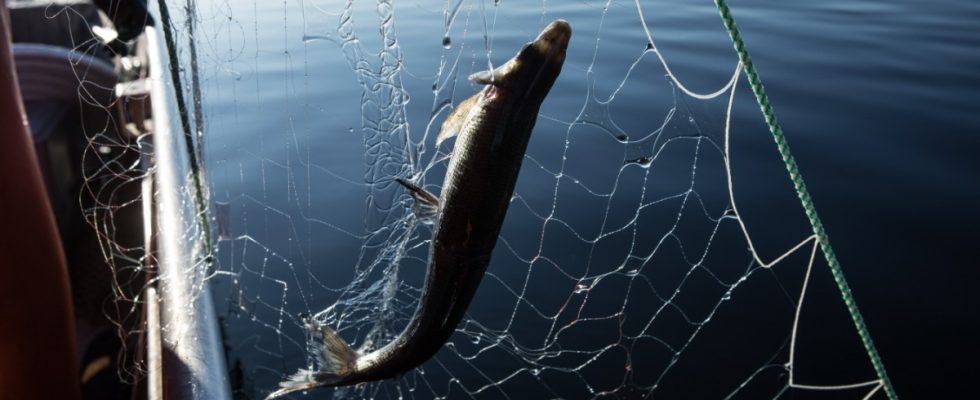The professional fishermen on the large lakes of Upper Bavaria are struggling with declining fish stocks. In particular, whitefish, by far the most economically important fish species in the lakes in the foothills of the Alps, were caught last year far less than before. This development was particularly noticeable on Lake Ammersee and Lake Chiemsee, as the fisheries advisor for the Upper Bavaria district has now stated in its annual report for 2023.
Accordingly, professional fishermen on Lake Chiemsee caught a total of 74.2 tons of fish last year. At 53.6 tons, more than two thirds of these were whitefish. In 2022, all of the whitefish caught from Bavaria’s largest lake together weighed a good 70 tons, in 2021 it was almost 76 tons. In the past three years, the total weight of whitefish captured was a quarter to half below the average for the years 2009 to 2019.
The report states that the reason for the decline is that the animals are not decreasing in number, but that they remain smaller on average and therefore weigh less in terms of catch weight. This in turn is due to a lower food supply in the lake and ultimately to a low phosphorus content – i.e. to improved water quality thanks to upgraded and expanded ring canals and sewage treatment plants. The fishermen on Lake Constance have been complaining about something similar for several years, where the whitefish are called “whitefish” but are also becoming smaller and fewer.
In addition to the cormorants as animal competitors of the fishermen, the report names other important factors for the decline in the number of whitefish on Lake Chiemsee and a real collapse in the number of catches on Lake Ammer, as well as the water temperature in the upper layers and the oxygen content in the depths. In both cases, the district’s fisheries experts see, in their own words, “the consequences of the climate crisis.” They themselves carried out a series of measurements last autumn in Lake Staffelsee in the Garmisch-Partenkirchen district after whitefish died there with numerous dead animals floating on the surface.
“The lake’s deep oxygen was completely used up over the warm summer months,” the report says. Accordingly, the oxygen in the water of Lake Staffelsee was simply zero from a depth of 8.5 meters. At the same time, the whitefish were unable to escape to the upper layers because the water there was still between 20 and 17 degrees warm even in October – and therefore in the long term significantly too warm for the fish species that specializes in the actually cooler lakes in the Alpine region. The report notes positive things about reintroduction projects for lake trout in Königssee and Mairenke in Schliersee.

